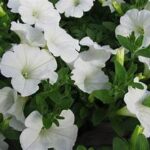How to grow and care for Hydrangea tree (A complete guide)

Large, eye-catching blooms in July and August are the hallmark of the deciduous Hydrangea tree. It grows well in full sun with little afternoon shade, yet it’s frequently mistaken for a shrub until it reaches tree hood. Though it can tolerate a wide range of temperatures and soil types, this adaptable plant prefers rich organic soil for its vivid blooms. It needs regular maintenance to stay healthy and beautiful because it is prone to diseases and pests. The Hydrangea tree can provide a magnificent focal point for any garden with the right care. Important information consists of…
The Hydrangea tree is a member of the Hydrangeaceae family and is sometimes referred to as the panicle hydrangea, or peegee hydrangea. It is a tiny tree or deciduous shrub that grows well in USDA hardiness zones 4 – 8. This plant likes loamy, well-drained soil that has an acidic to neutral pH. It grows well in both full and partial sun. It displays white, pink and green flowers from summer to autumn. The Hydrangea tree, an Asian native, is a beautiful and adaptable accent to any garden.
Hydrangea tree care
When given the right care, the Hydrangea tree, or hydrangea tree, flourishes and produces an abundance of blossoms. As these deciduous trees get older, especially in the afternoon, they can withstand some shadow, though at first they prefer full sun. Rich, well-drained soil is ideal for them, and they gain from early spring feeding with organic matter. Frequent pruning in the early spring or late autumn encourages new growth. Vigilance is necessary to maintain their health even though they are generally resistant to diseases and pests. In July and August, the panicle hydrangeas on these shrub-like trees are in full bloom.
Light
While Hydrangea tree loves full sun and afternoon shadow, it can tolerate little shade. For optimal growth and bloom production, it requires four to six hours of sunlight per day. Too much shade can stunt growth and reduce the beauty of flowers, even if intense heat in late July and early August can be dangerous.
Soil
Hydrangeas prefer somewhat acidic soil, and they grow best in rich, organic soil that drains well. They can withstand varying pH levels of soil and thrive on a blend of sand, silt, and a tiny bit of clay. Avoid situations that are too wet if you wish to stay healthy.
Water
For optimal growth, hydrangea trees require regular irrigation, particularly in arid conditions or full sun. Because it can thrive in drier environments, Hydrangea tree needs less water, although overwatering should be avoided to keep pests and diseases at bay. To minimise evaporation, watering should ideally be done in the early morning or late evening.
Humidity and temperature
The Hydrangea tree thrives in both hot summer days and cool fall days. It can tolerate both extremes. It grows best in areas with moderate summer temperatures and afternoon shadow. Although the soil can tolerate less humidity if it gets adequate water, especially in the early spring when it is blooming, it favours dampness.
Use of fertilizer and pruning
Hydrangea tree benefits from early spring fertilizations with organic materials because it promotes the growth of new wood for blooms. But excessive fertilization must be avoided as this might lead to an overabundance of leaves and heightened vulnerability to pests and illnesses. Trimming should be done in early spring during dormancy to promote healthy new growth. Late-fall pruning may expose the tree to disease and pests. These trees blossom wonderfully from July to August provided they receive proper maintenance.
Overwintering
Trimming late autumn foliage will help protect Hydrangea tree from frost vulnerability. Prune in the early spring while the new growth is still green. Before the first frost, cover the roots with a layer of organic materials to insulate them. Because the tree dislikes direct sunlight, make sure it gets shade throughout the middle of the day in the winter.
How to grow Hydrangea tree from seed?
Best timing and choosing the site
Plant Hydrangea tree in the early spring, after the last frost, which is often in late March or early April, to ensure a gorgeous, blooming plant. For best growth, pick a garden location that gets early sun and afternoon shade. In warmer climates, July and August are the ideal months for these hydrangeas to thrive; yet, in order to flower on new wood, they require protection from the intense afternoon light. If there’s not enough full morning or afternoon shade, a partially shaded area will do.
Soil preparation and planting the seed
A well-drained soil that has been supplemented with organic matter is ideal for the growth of Hydrangea paniculata. Given that hydrangeas prefer habitats that are rich in water and nutrients, the soil should remain moist during the late autumn and winter months to sustain dormancy. To allow for growth, plant seeds in the shape of a tree, spaced roughly three feet apart. Though they are deciduous, losing their leaves in the late autumn, by April they will be lush, bushy bushes.
Post planting care of Hydrangea tree
Hydrangea seeds need to be watered liberally after planting and frequently until they take root. As the plant grows, keep an eye out for disease-causing agents. Although hydrangeas are not very pest-prone, diseases like mildew can be efficiently controlled with minimum pruning and routine examination. If illnesses are ignored, however, hydrangeas can become subject to them.
You should start to see blooms on your hydrangea tree by the spring of next year. Recall that this plant rewards cautious attention and patience!
Growing Hydrangea Tree through propagation
Select the best time
When Hydrangea tree starts to bloom in the early spring, start your propagation efforts. By doing this, the hydrangea tree can establish itself before the arrival of colder weather because the new wood will be at the ideal stage for rooted.
Preparation of cuttings
For Hydrangea tree cuttings, use robust, healthy plants. Select 4–8 inch portions of newly emerging wood that are not too delicate nor entirely hardwood, but are just beginning to blossom.
Plant the cuttings
Provide an atmosphere that is conducive to rooting and strikes a balance between sun and shade.
The greatest places for hydrangea trees to grow are those with morning sun and afternoon shade. A young tree may be harmed by too much sunshine, particularly in the warmer months of July and August.
Rooting of cuttings and aftercare
Hydrangeas benefit from adding organic matter to the soil after cuttings are planted in order to retain moisture and improve soil nutrients. While overwatering should be avoided to minimize pest and disease problems, regular irrigation is necessary for the formation of roots.
Fall transfer to final location
Your new hydrangea tree should be sturdy enough to be moved into its permanent place by late autumn. They typically have finished growing for the season at this point and are starting their dormant phase.
Common pests and disease problems of Hydrangea tree
Numerous pests and diseases can affect Hydrangea trees, including Hydrangea tree and other panicle types. Aphids can cause leaf distortion when they infest during the establishment of new wood; controlling infestations requires giving plants access to both midday shade and sunlight. A fungal disease called powdery mildew causes white, powdery material to form on leaves. It grows best in damp, shady environments and can be controlled in the early spring by applying fungicides and organic matter.
In order to prevent spider mites from discoloring leaves, it is important to provide sufficient watering and keep plants from becoming too dry in the sun. During dormancy, vine weevils prey on hydrangeas, causing damage to their roots and foliage. Monitoring infestations and using insecticides can help. A fungal infection called botrytis blight causes grey mould on buds and blossoms and thrives in moist environments. It can be prevented by minimizing moisture, increasing air circulation, and removing afflicted plant material as soon as possible.
Common problems and solutions for Hydrangea tree
Common problems with Hydrangea tree include brown tips, yellowing leaves, dormancy, and failure to bloom. As too much sun exposure often results in brown tips, make sure the plant gets midday shade. A disease, a lack of nutrients, or water stress can all be indicated by yellowing leaves; regular watering, feeding with organic matter, and keeping the surroundings free of disease can all help.
Since these trees bloom on new wood, it is usually best to prune gently or to make limited interventions as harsh trimming often prevents the tree from blooming. Trees naturally enter a state of dormancy after flowering, during which they lose their leaves and cease growing until spring. Addressing these issues appropriately can guarantee a hydrangea tree that is healthy and produces flowers.



Pingback: How to grow and care for snow peas plants